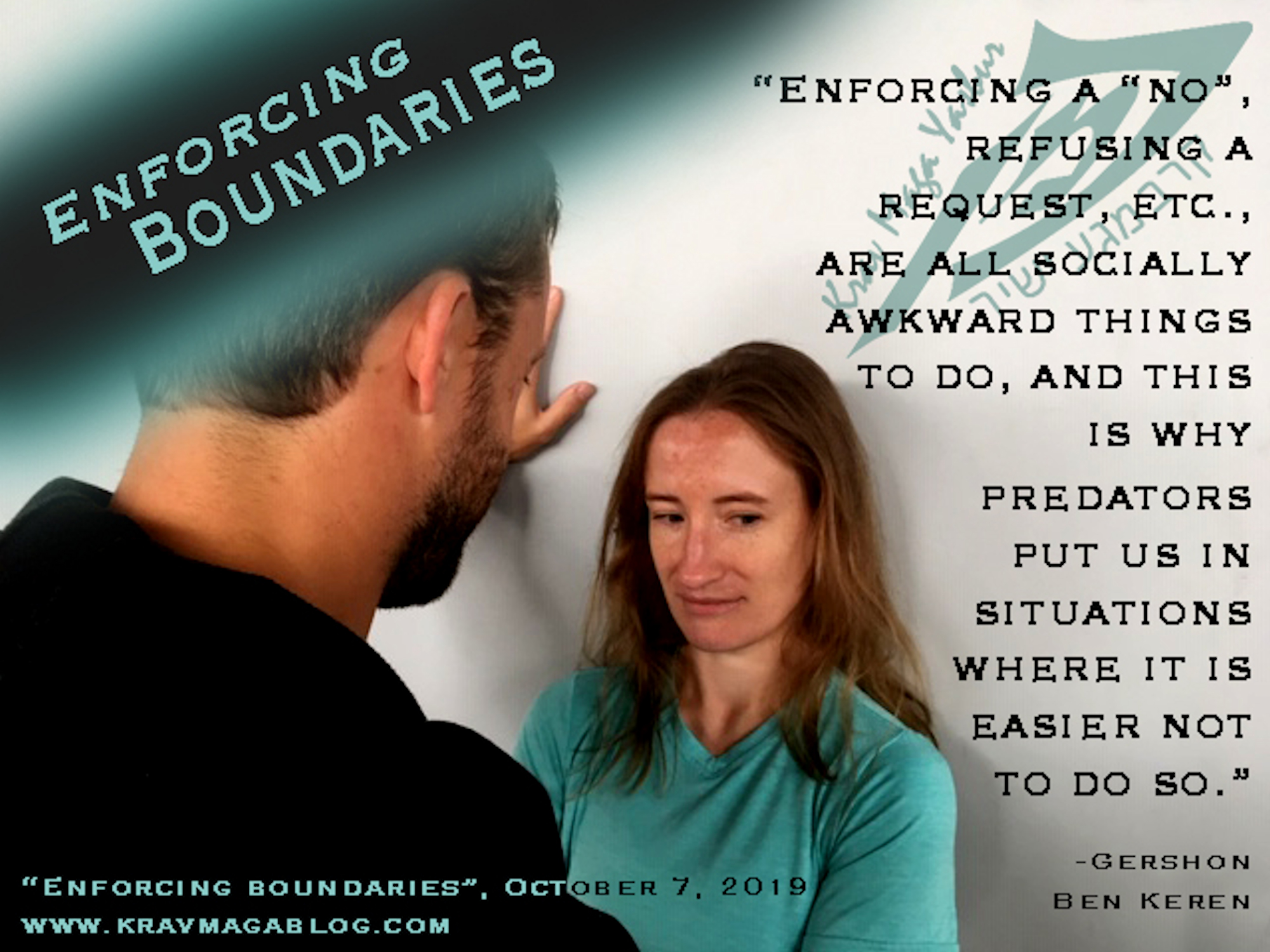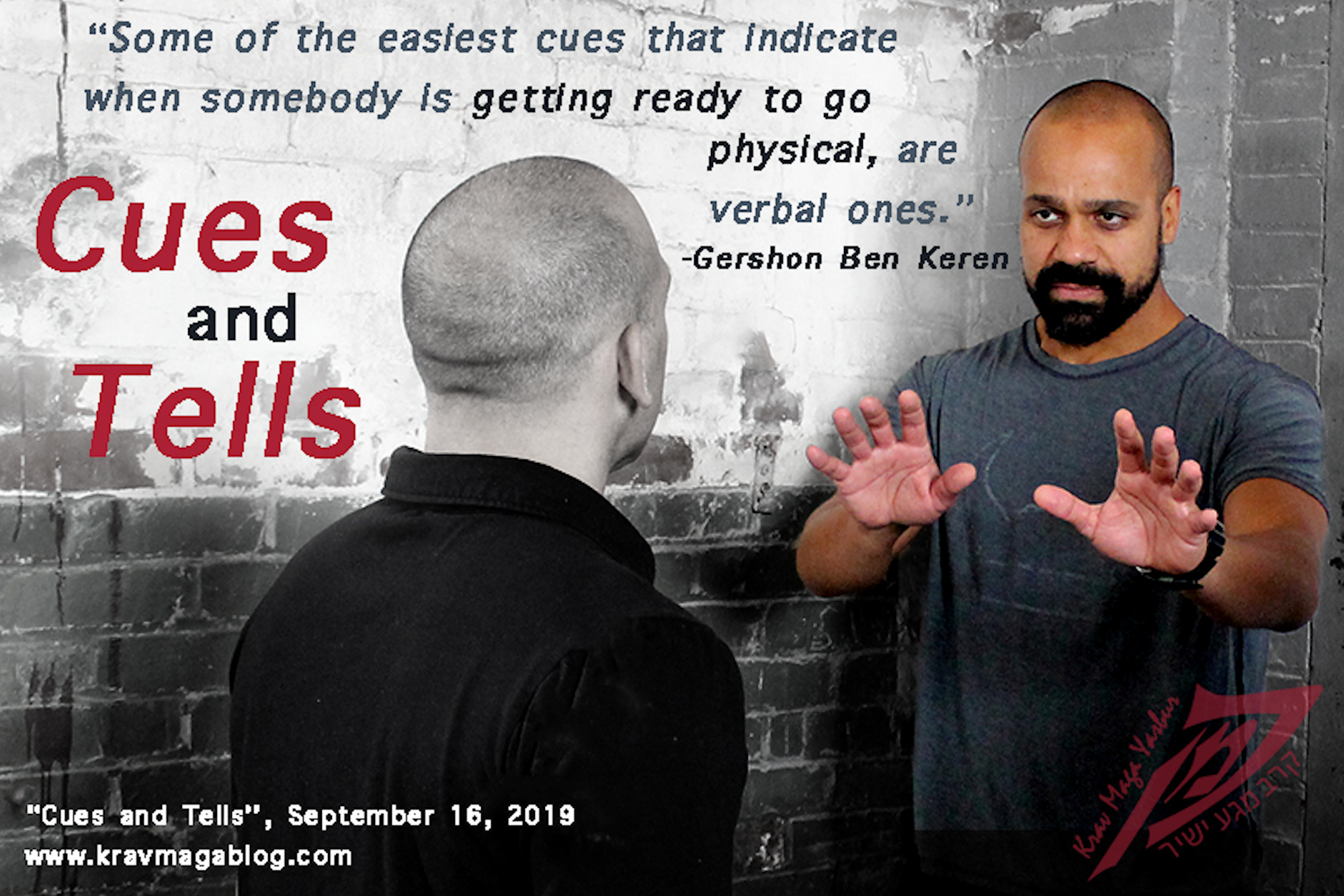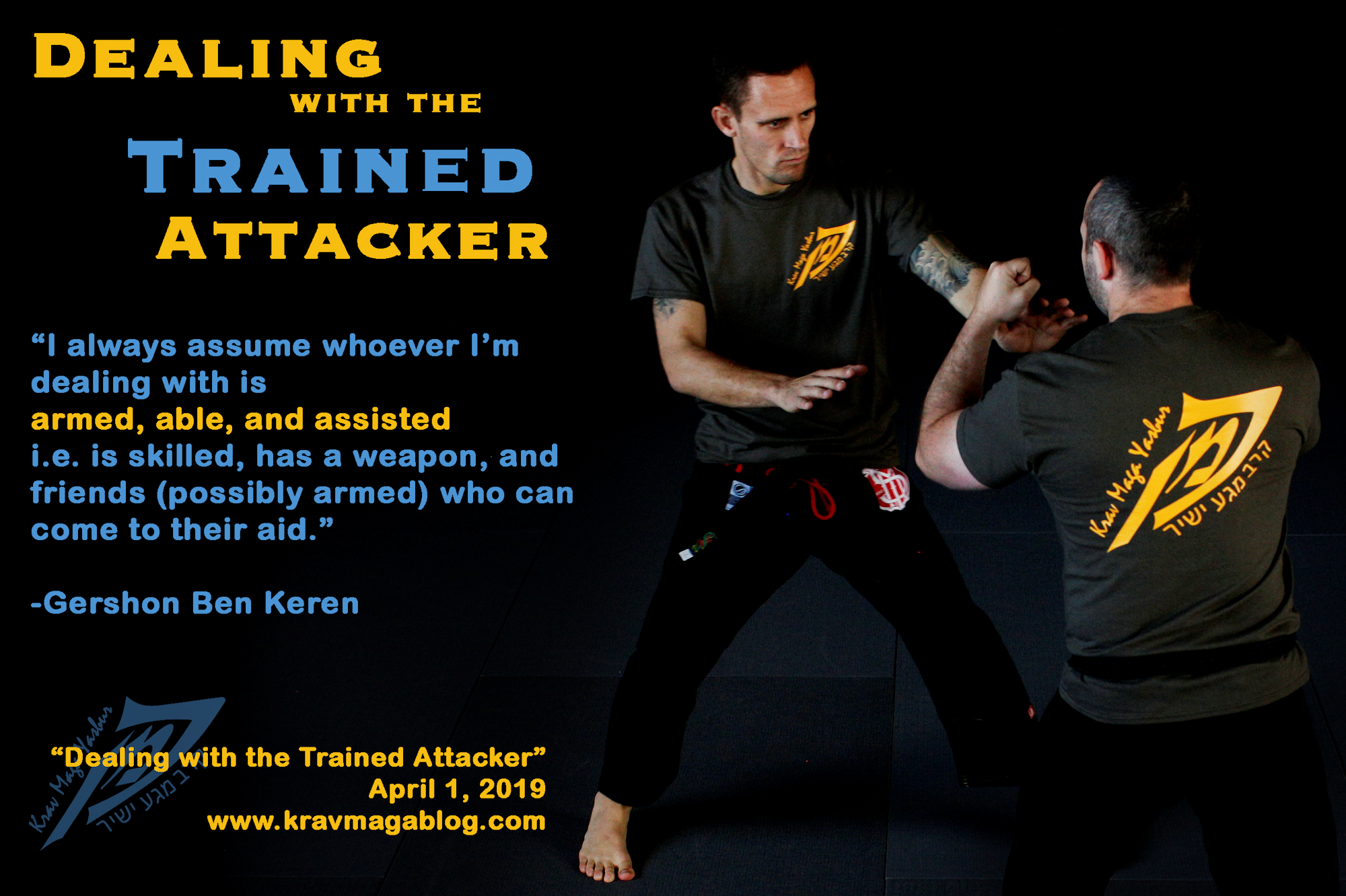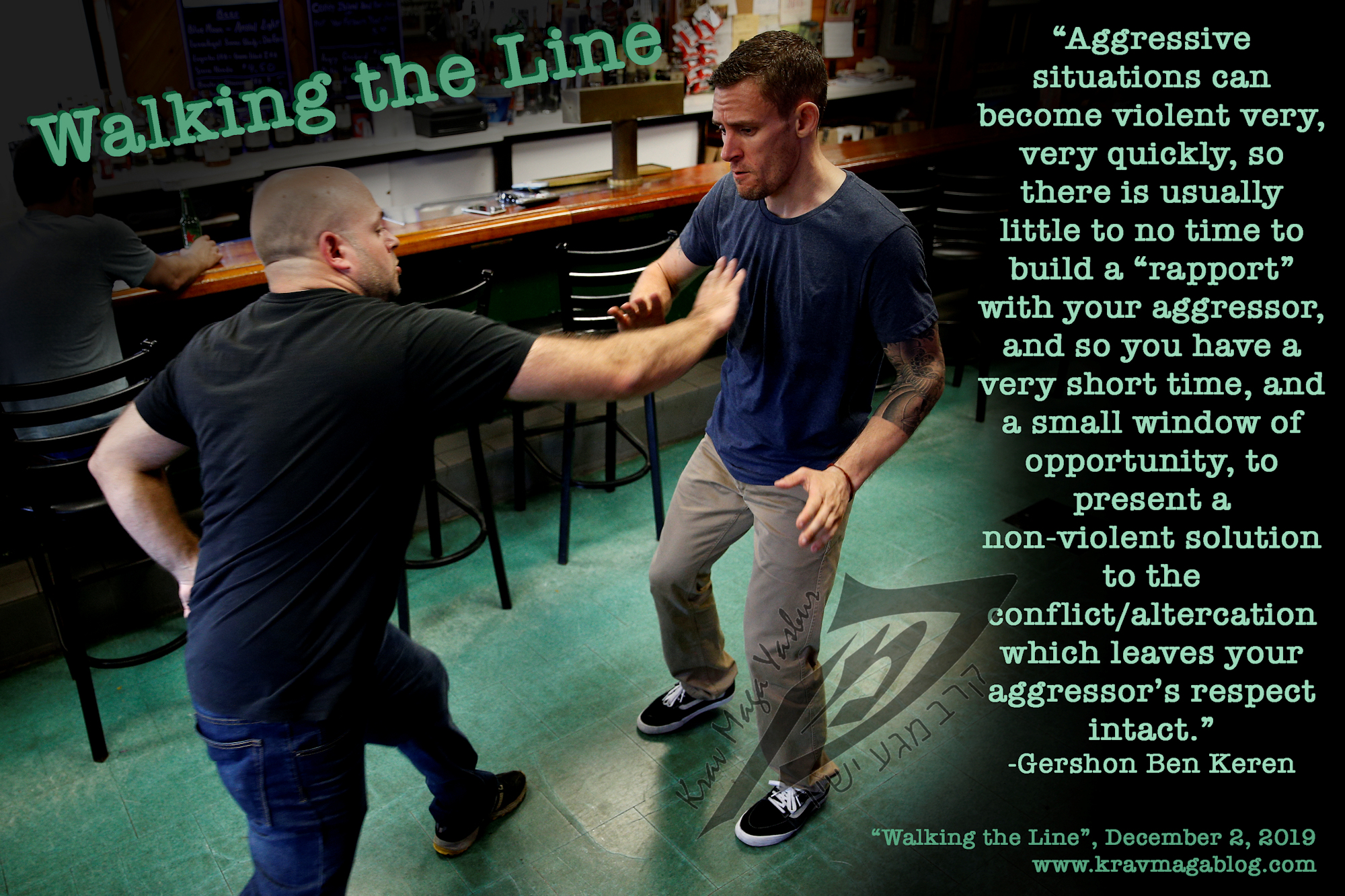Why Scenario Based Training Is Essential For Krav Maga, is an article written by Gershon Ben Keren, a 5th Degree Black Belt in Krav Maga, who teaches Krav Maga in Boston, MA. He has also authored three Amazon best-Selling Books on Krav Maga.
Most Krav Maga students will have had little exposure to actual violence (there are also instructors out there who fall into this category). Because of this, students can fall prey to the idea that the practice of techniques and skills in a classroom setting, accurately reflects the real world. There is also the idea that simply practicing techniques, against committed, realistic attacks, replicates real world violence – in some regards it does, but in many it doesn’t. It trains, and improves, skills and attributes, and technique execution, but it doesn’t actually improve a student’s “understanding” of what violent situations look like, and how they should act and behave in them, whether physically or non-physically. Regular class style training rarely prepares students for the “when” of violence – when should they attempt a physical solution, etc? If we don’t address these issues, of threat recognition, effective decision making, appropriate information gathering and the like, along with de-escalation methods, we are not preparing our students for the real world; we are simply teaching Krav Maga, as we might a traditional martial art, and not as something that should be relevant to those who come and train with us. In this article, my goal is to demonstrate, from some of the scenarios I used in a seminar this weekend, why scenario-based training, needs to be part of our Krav Maga training.
One of the ways I try to get students to think about how they should act and behave in a situation, is to withhold a vital piece of information from them, and see if they recognize that they might not actually understand (at the outset) the situation in which they find themselves. One scenario I use, is that of a man who is wrestling with a girl on the ground, trying to get control of her, whilst her friends stand by, shouting for him to leave her alone. When the student happens upon the situation, the group asks them to help their friend. Most people do. The missing piece of information, is that the man trying to control the women is a plain-clothes policeman, trying to make an arrest. There is subtle information given out on the scenario, such as one of the group, shouting, “leave her alone, she didn’t do anything,” etc. -comments and remarks that should prompt the student to try to inquire as to why the man is trying to control their friend. One of the problems that many Krav Maga students have, is that they are taught to be decisive, and act. This can make them enter “fight” mode too early in a situation, where they don’t actually understand what is going on around them. Being able to understand what information is missing in a situation, allows you to make an appropriate and effective decision, rather than acting at face value. The woman being controlled wasn’t in imminent danger, she wasn’t having her head smashed of the concrete, or even being punched. In some situations, there is time available to get a better understanding of a situation, and if this luxury exists, it should be taken. Not every violent situation may be what it first seems.
Another benefit of scenario-based training is that it teaches students, that there aren’t always “happy path” solutions, and that when you deal with real-life violence you can be caught in a situation, with ever decreasing circles of opportunity. One scenario I use involves the setup of an express kidnapping (obviously the student in the scenario is not aware of this “intent”). An express kidnapping is one where a person is kidnapped, and taken to a series of ATM/cash machines, and forced to withdraw money – sometimes they are kept overnight, so that the kidnappers aren’t restricted by the daily withdrawl limits that most banks place on ATM usage. In South America, a common setup for an express kidnapping, is for a taxi driver to pull over to pick up another passenger (usually explaining that ride-sharing is common in their country), who is an armed accomplice. I use this type of scenario, to demonstrate how options that you may think you had, can easily be taken away from you. When we ran this scenario this weekend, one student participating, offered to pay double if the taxi-driver didn’t pull over – the fact that they were refused was a good indication that there was more to this pick-up, than the driver just making an additional fare. This is a good example of information gathering, which allowed for a better understanding of the situation. The student now had to decide whether to stay in the car or get out, and when they get out whether to try and gather more information, run/disengage or engage with the would-be fare. It is worth pointing out that some scenarios are setup to be benign i.e. nothing happens. So from the student’s perspective, it could just be a taxi-driver picking up an extra fare, who has no malice or harmful intent. In this scenario, I usually have the location be somewhere remote between two towns. The reason I do this is to get the student to question whether disengagement is appropriate. That is, they may avoid this incident, but there is nothing to stop the taxi-driver and his accomplice from turning the car around and driving after you, etc. Sometimes it may be appropriate to disengage from one incident, recognizing that you may have to face another, other times, it’s better to deal with the first incident.
The most valuable part of scenario-based training, that challenges students’ threat-recognition and decision-making, is the debrief, afterwards. After each scenario, we sit down and discuss, what happened, what other options may have been available, and how the situation might have played out differently. Training to deal with violent incidents in the real world has a cerebral component to it. One scenario I used this weekend, involved a road traffic accident, that the student comes across whilst driving late at night on a remote road – the scenario is just that, there is no harmful intent in it. It is, however, a situation that could be a setup for something nefarious, so you have a situation where you may feel compelled to help, but still need to ensure your own safety. Debriefing such a scenario, where nothing bad actually happens, is a great opportunity to talk about every day processes and procedures you can employ to keep yourself safe whilst dealing with seemingly “ordinary” situations. I am a firm believer that because Krav Maga is a reality-based self-defense system, our teaching and training shouldn’t just focus on skills and techniques, but on improving our students’ (as well as our own) understanding of violence.
0 COMMENTS














